
kindergarten
Kindergarten


Period 5 - Rafara... an African folk tale

Session 1:
Present the album- Locate title/author/illustrator
Observe the illustration, the colors, the character, the richness of the graphics
Reading the first part(until "very fat and plump")
explain difficult words - show referents
Oral comprehension questions
-
what is the title of the album?
-
where does this tale come from
-
what are the characters?
-
where does the story take place ?
How many daughters does the father have?
Which is the cutest?
What will the 3 sisters pick?
What is the monster's name?
In your opinion, why did the 2 sisters abandon Rafara?
What story do the 2 jealous sisters (Snow White), the monster that makes Rafara (Hansel and Gretel) fatten up?
Right wrong
-
The father has 4 daughters
-
Rafara is the youngest of the sisters
-
Trimobe is a nice monster
-
Trimobe wants to eat Rafara
-
Rafara eats very well in the monster's lair

RAFARA an African folk tale illustrated by Anne-Catherine De Boel
This album is rich in illustrations related to Africa (colors, graphics...)
There are similarities with traditional tales:
-
the unloved sister -> Cinderella
-
the child that we fatten to eat -> Hansel and Gretel
-
the pursuit -> Baba Yaga
Children will also be able to discover vocabulary specific to Africa (nightshades, box, etc.)
This will be an opportunity to gather information, to do research on this part of the continent (fauna, flora, way of life, climate,...) without forgetting to talk about Africa today, the big cities .
We can also take the opportunity to create one or more literary networks (on Rafara's Africa, on wickedness, on brother/sister relations...)
The structure of this tale:
-
Initial situation: a father and his 3 daughters
-
The stages: the abandonment / the meeting with the Trimobe monster / the meeting with the mouse / the pursuit and the 3 magic objects / the meeting with the Vovondreo bird
-
The Final Situation: Homecoming, Forgiveness, Happy Ending


Session 2 :
reminder of the beginning of the story
Reading of the second part(up to "remarkable flair")
explain difficult words - show referents
Oral comprehension questions
-
Why is Trimobe keeping t Rafara prisoner?
-
What does the mouse give Rafara?
-
Why does Trimobe get angry? (beyond the meal that flies away there is the disobedience of the child)
-
Who are we talking about ? who speaks?
-he seized the unhappy child
- you will be my daughter
-I will be your daughter
- he flew into a terrible rage
-he had a remarkable flair
- if I run away he will catch me
-let me go back to the village to reassure my family
-I'll take you there soon
Right wrong
-
Every night Trimobe went in search of food
-
Trimobe advised Rafara not to open to anyone
-
And every day he came back with his arms full of delicious food for his son.




Session 3 :
reminder of the beginning of the story
Reading the end of the story
explain difficult words - show referents
Oral comprehension questions
-
How does stick turn into?
-
How does Trimobe make lac disappear?
-
What does the stone turn into?
-
How does he make forest disappear?
-
What does the egg turn into?
-
What is the name of the bird that comes to save Rafara?
Right wrong
-
Rafara throws the stick
-
Rafara becomes a lake
-
The stick becomes a lake
-
The stone becomes a stick
-
Trimobe throws the stone
-
The stone becomes a forest
-
Vovrondeo had dull plumage
-
Vovondréo carried Rafara on his wings
-
He dropped Rafara in front of his parents' house
-
Rafara adorns Vovondreo's wings with 10 gems
Sheets




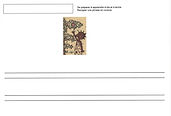





large labels
Associate the syllables to reconstitute the names of the characters
















Lien vers Arts plastiques
Fabriquer Vovondreo
Networking
Theme: Africa


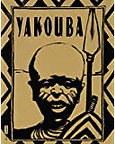

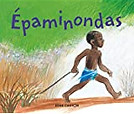

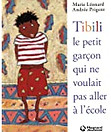
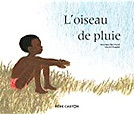



Yakouba

Yakouba - Thierry Dedieu
African tale
Today, in a small African village, a great feast is being prepared in honor of the boys of the tribe: they must successfully pass the initiation test which will make them men. Yakouba must prove his courage and, alone, face the lion. But the nature of the ordeal that awaits him is very different from what he expected, because the encounter with the lion places the young boy faced with a difficult choice...
Structure of this tale:
-
the party and the ordeal to face
The big day has arrived for Yakouba, he must undergo the initiatory test which allows the children of the tribe to be received into the adult clan: facing a lion alone.
It is the tradition, the intangible law which cements the group.
-
the meeting of the lion and the dilemma
But, faced with the injured lion, a moral problem arises.
Make the child understand the dilemma: act like the group to be part of it or act with reason and take responsibility for their actions.
-
Yakouba's choice and the consequences
The village benefits from Yakouba's choice but no one knows it except him.
Extensions:
-
Philosophical workshop: Notion of courage, respect
Does Yakouba act like a hero?
Is he recognized at the end by his tribe? Why ?
-
Networking
Theme: making a choice that determines your future

Once upon a time there was a very unhappy young man. Just by looking at him, we understood why: he was ugly. In order to find out the reason for his disgrace, he goes in search of the Mountain where Heaven meets Earth.
There, three geniuses answer three questions.
Based on a Vietnamese folk tale.

A long time ago, in a small village in China lost between mountain and sea, there lived a man named Hai Li Bu. Betray his promise or let his people die, such is the tragic dilemma of this young hunter.
A magnificent album adapted from a traditional Chinese tale.
L'Afrique de Zigomar

Décalage image/texte
Phase collective :
Lecture à haute voix => jusqu'au départ pour l'Afrique
Puis faire deux groupes :
-
les bons lecteurs = lire le texte sans les images puis dessiner
-
les autres = enlever le texte - raconter d'après les images
Retour en travail collectif :
Comparer les résultats des 2 groupes
lecture de l'album en montrant les illustrations de l'auteur
Travail sur les décalages :
voir page à page ce qui est dit // ce que l'on voit
Qu'est ce qui fait penser dans le texte que la grenouille doute ?
Sound worlds
Soko and Take (Adama Dramé)
-
Refine your listening
-
play with his voice
interest: principle of repetition in this music of the griots
TO LISTEN
-
male voice alternating with female choir => variation in timbre
-
bass/treble => pitch variation
PRODUCE
-
choose a chorus phrase
-
the choir (class group) repeats it alternately with a child soloist who improvises by modifying it (intensity, duration, expression...)
-
record the production and listen to it




















